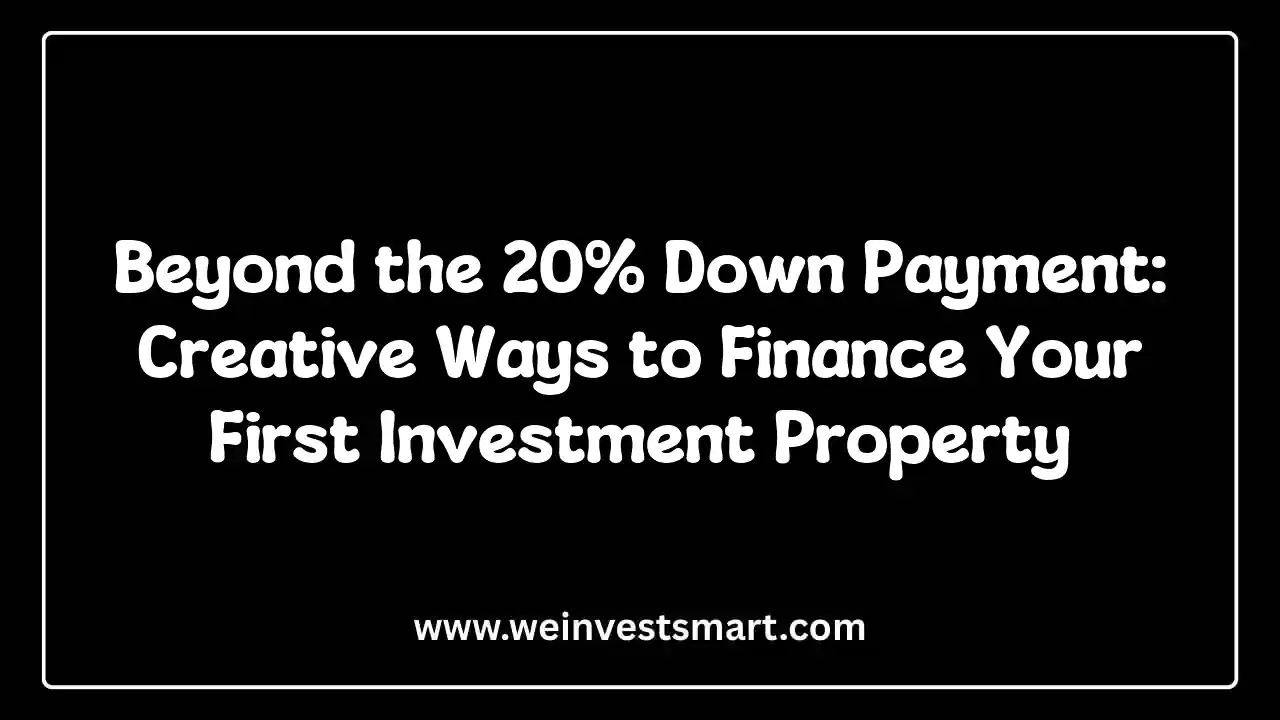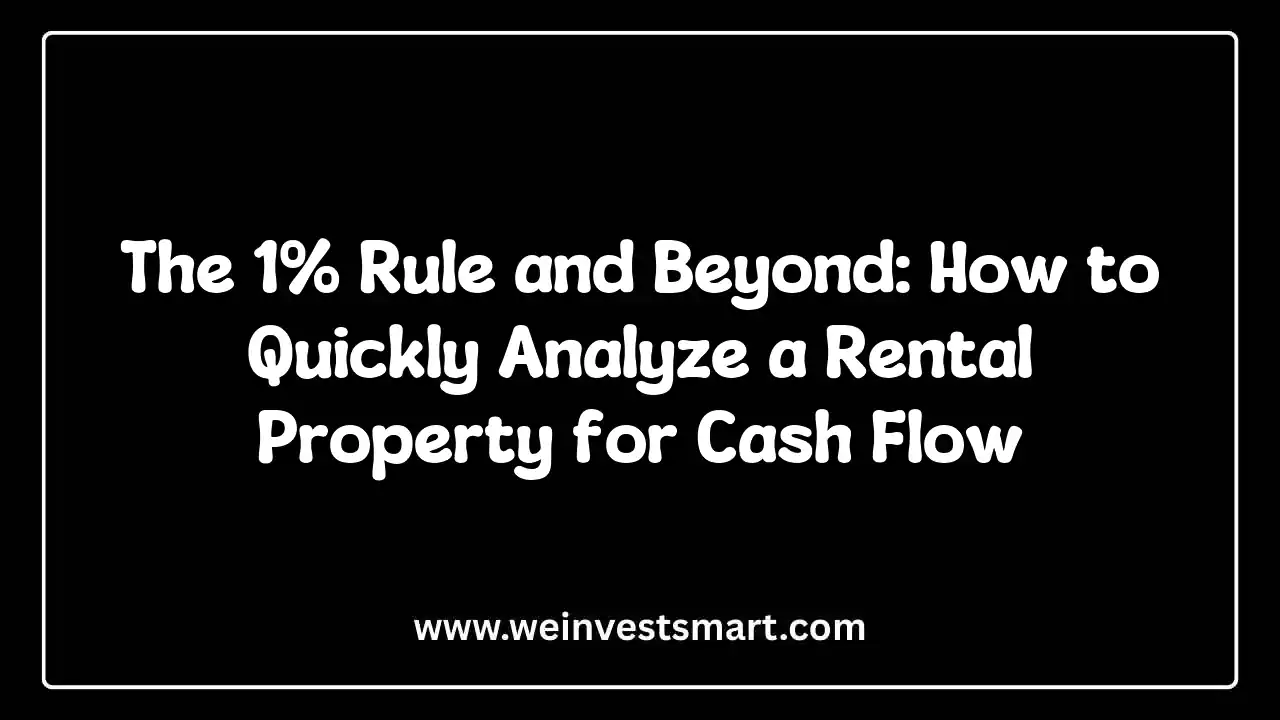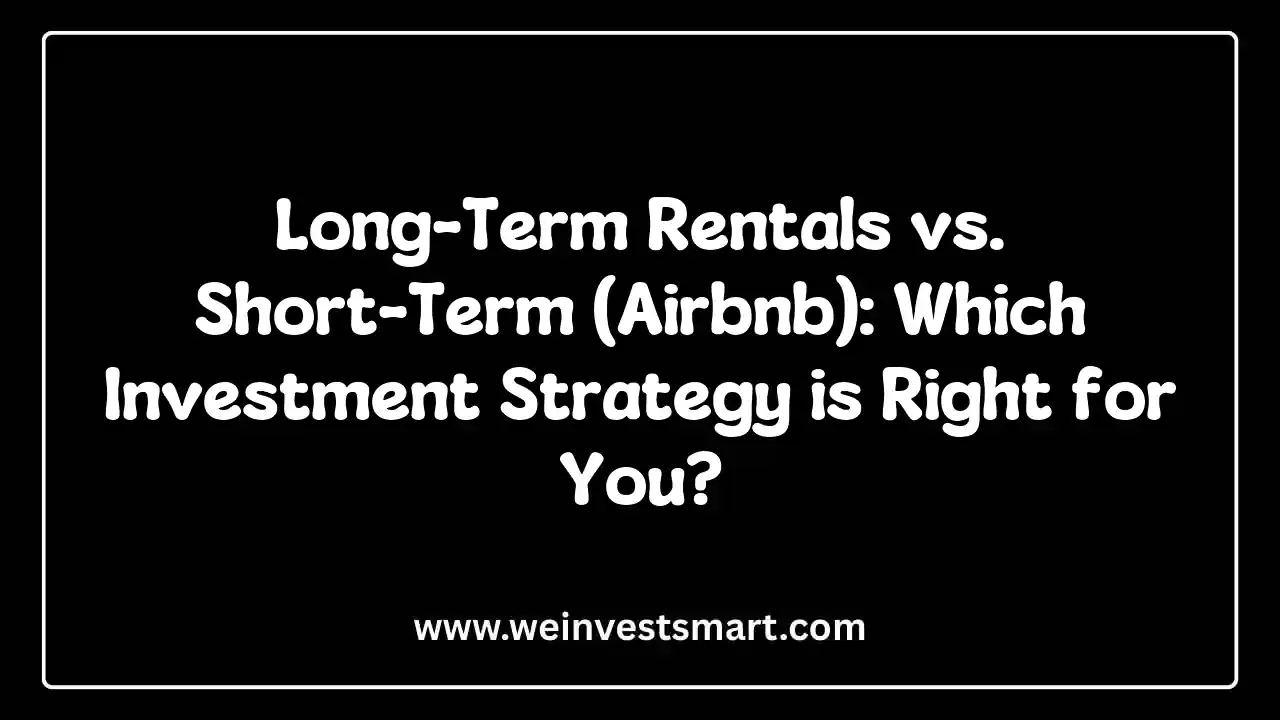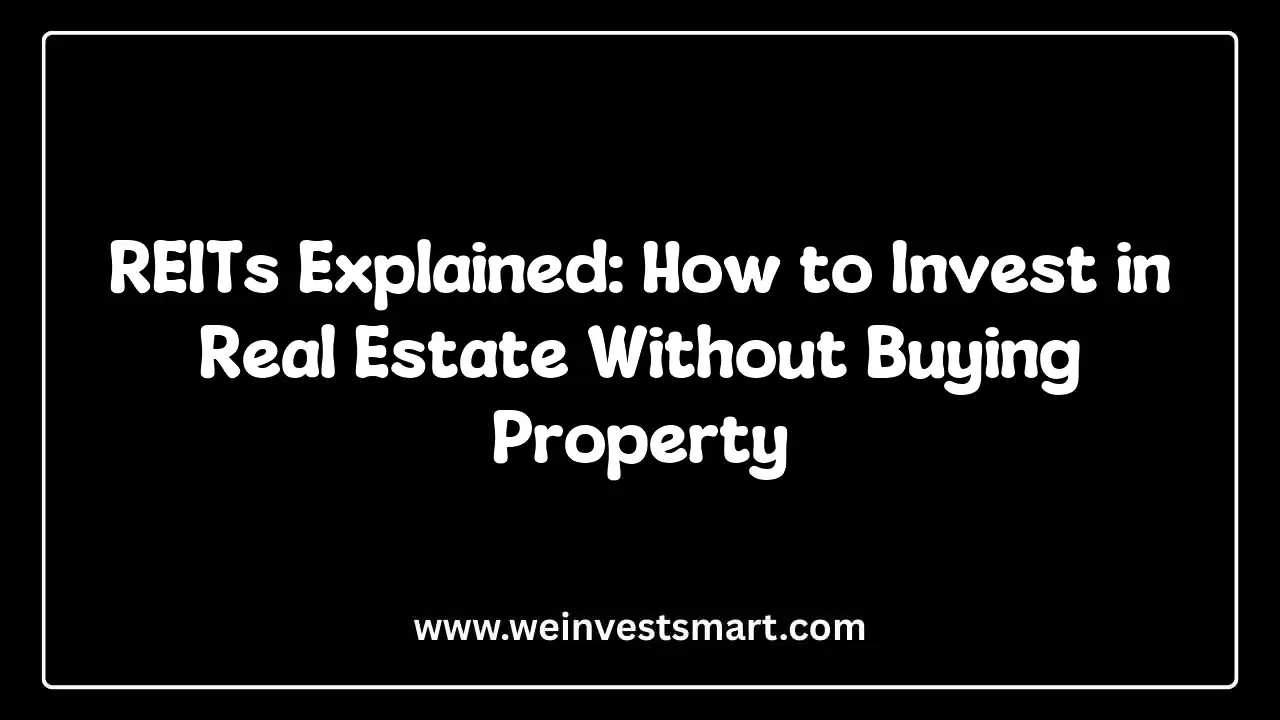· WeInvestSmart Team · real-estate-investing · 11 min read
The BRRRR Method Explained: The Ultimate Real Estate Wealth-Building Strategy
A complete breakdown of the BRRRR strategy: Buy, Rehab, Rent, Refinance, Repeat. Learn how this powerful method allows investors to recycle their capital to rapidly build a rental portfolio.
Most people approach real estate investing like planting an oak tree. They buy one property, using all their savings for a down payment, and then they wait. For thirty years, they slowly pay down the mortgage and hope the market appreciates, eventually owning one single, solitary asset in their old age. This slow, plodding path is presented as the only “safe” way to build wealth in property.
But here’s the uncomfortable truth: this method is brutally inefficient. Your single most valuable resource—your capital—is held hostage in that first property, trapped for decades. To buy a second property, you must start the arduous savings process all over again. This is the financial equivalent of trying to fill a swimming pool with a teaspoon.
What if there was a system designed to break this cycle? A method that allows you to buy a property, increase its value, and then surgically extract your initial investment to use it again on the very next deal, all while keeping the original cash-flowing asset? This isn’t a fantasy. It’s a powerful, repeatable system for recycling capital.
Going straight to the point, this strategy is known as the BRRRR method. And this is just a very long way of saying that you are about to learn how to stop buying properties one at a time and start building a machine that acquires properties for you.
What is BRRRR? Deconstructing the Wealth-Building Machine
Before we dive in, we have to address the name. BRRRR sounds like a gimmick, a complex acronym from a late-night infomercial. The funny thing is that behind the silly name is one of the most elegant and powerful investment strategies ever devised. It’s not five separate steps; it’s one integrated process.
BRRRR is an acronym that stands for:
- Buy: Purchase a distressed property that is undervalued due to its condition.
- Rehab: Renovate the property to increase its value and make it desirable for tenants.
- Rent: Place a high-quality, long-term tenant in the property to establish a consistent income stream.
- Refinance: Go to a bank and get a new, long-term loan on the property based on its new, improved value, pulling your initial cash investment back out.
- Repeat: Use the money you just pulled out to start the entire process over again on a new property.
In other words, you are not just a landlord. You are a capital recycler. You use the same pile of money over and over again to acquire an ever-growing portfolio of cash-flowing rental properties.
The Magic Ingredient: The Power of Forced Appreciation
To understand why BRRRR works, we need to go to the heart of the problem, which most people don’t know: the critical difference between market appreciation and forced appreciation.
Market appreciation is passive. It’s what happens when you buy a house and hope that, over many years, the neighborhood improves and the entire market rises, increasing your property’s value. You are a passenger on a ship you cannot steer.
Forced appreciation is active. It’s the increase in value you create through direct, strategic action. This is the engine of the BRRRR method. You are not waiting for the market to give you equity; you are manufacturing it yourself through renovation.
Here’s where things get interesting. The core principle is buying a property for significantly less than what it will be worth after you fix it up. This future value is called the After Repair Value (ARV). The entire strategy hinges on a simple equation: the ARV must be substantially higher than the total cost of the project (purchase price + rehab costs).
Let’s make this concrete:
- You find a tired, dated house and buy it for $150,000.
- You invest $40,000 into a smart, “rent-grade” renovation (new kitchen, bathrooms, paint, flooring).
- Your total investment is $190,000.
- After the renovation, the property is now one of the nicest on the block. A licensed appraiser determines its new market value—its ARV—is $250,000.
You have just manufactured $60,000 in equity out of thin air. You didn’t wait for the market; you forced the value up. This newly created equity is the key that unlocks the “Refinance” step and allows you to get your money back.
A Step-by-Step Breakdown: Putting the BRRRR Method into Action
Let’s walk through the entire process using our example numbers to see how the capital is recycled.
Step 1: BUY
You find a distressed duplex for $150,000. It’s structurally sound but cosmetically hideous. Because traditional banks are hesitant to lend on properties that need significant work, you can’t get a conventional mortgage. Instead, you use short-term, creative financing:
- Hard Money Loan: A short-term, high-interest loan from a private lender.
- Private Money Loan: A loan from an individual in your network.
- Cash/Line of Credit: Using your own capital or a HELOC from another property.
For this example, let’s say you use cash or a line of credit. Your initial cash outlay is $150,000.
Step 2: REHAB
You immediately begin the renovation with a strict budget of $40,000. This is not a high-end “flip” for a retail buyer. The goal is to create a durable, clean, and modern space that will attract quality long-term tenants. You’re using sturdy LVP flooring, not marble. You’re using reliable, mid-grade appliances, not Viking ranges. The rehab takes three months.
Your total cash invested in the project is now $150,000 (Purchase) + $40,000 (Rehab) = $190,000.
Step 3: RENT
As soon as the renovation is complete, you screen rigorously and place high-quality tenants in both units, signing one-year leases. Let’s say each unit rents for $1,200/month, for a total Gross Monthly Rent of $2,400. This rental income is critical for two reasons:
- It starts paying the property’s expenses (taxes, insurance).
- It proves to the bank in the next step that the property is a stable, income-producing asset.
Step 4: REFINANCE
This is the magic step. After the property has been rented and “seasoned” for a few months (most banks want to see a history of rental income), you go to a traditional lender to get a cash-out refinance. You’re not asking for a loan based on your $190,000 cost; you’re asking for a loan based on the new appraised value of $250,000.
The bank will typically lend up to 75% of the appraised value on a cash-out refinance for an investment property.
- New Loan Amount: $250,000 (ARV) x 0.75 (Loan-to-Value) = $187,500
The bank gives you a check for $187,500. This money is used to pay back your initial investment:
- Total Invested Capital: $190,000
- Cash Received from Refinance: $187,500
- Your Capital Left in the Deal: $2,500
You have just acquired a fully renovated, cash-flowing duplex that is worth $250,000, and you only have $2,500 of your own money left in the deal. The new $187,500 loan is now a long-term, 30-year mortgage, and the rent from your tenants pays it down every month.
Step 5: REPEAT
You now have $187,500 in cash back in your bank account. You take that capital and immediately start hunting for the next distressed property, beginning the entire powerful cycle all over again. While the traditional investor is still saving for their second property, you are already closing on yours.
The Unbeatable Advantages: Why BRRRR is the Ultimate Wealth Accelerator
- Velocity of Capital & Rapid Scaling: This is the primary benefit. Because you are recycling the same capital, your ability to acquire properties is limited only by your ability to find good deals, not by your ability to save. You can buy multiple properties in a single year.
- Infinite Returns: This sounds like a gimmick, but it’s mathematically true. If you manage a “perfect” BRRRR and pull out all of your initial capital (leaving $0 of your own money in the deal), your cash-on-cash return is technically infinite. You are earning cash flow on an asset you have no money in.
- You Control Your Equity: You are not subject to the whims of the market. You are creating your own equity on your own timeline through strategic renovations. This gives you far more control than a passive investor.
- High-Quality Portfolio: The BRRRR method leaves you with a portfolio of fully renovated properties. This means lower maintenance costs, fewer surprise repairs, and the ability to attract higher-quality tenants who will pay a premium for a modern, updated home.
The Uncomfortable Truths: This is a High-Stakes, Advanced Strategy
This sounds like a perfect system, but it’s actually a trade-off. We covet the rapid growth, but it comes with immense risk. BRRRR is not for beginners, and it can lead to financial catastrophe if executed poorly.
- Rehab Risk: This is the most common point of failure. Underestimating your renovation budget can completely destroy your numbers. A $40,000 budget that balloons to $60,000 means you will be unable to pull your capital out at the refinance. You must have a deep understanding of construction costs or a highly trustworthy team.
- Appraisal Risk: The entire strategy hinges on the “R” and “R”—Rehab and Refinance—being linked by a favorable appraisal. If the appraiser values the property lower than your target ARV, the bank will lend you less money, and your capital will be trapped in the deal.
- Financing Risk: The refinance is not guaranteed. If interest rates spike between your purchase and your refinance six months later, your new mortgage payment could be so high that the property no longer cash flows. You are exposed to shifts in the lending environment.
- Deal Sourcing Risk: BRRRR requires a specific type of property: one that is undervalued enough to allow for a significant equity spread after rehab. These deals are hard to find and highly competitive. You need a robust system for finding off-market deals.
The Bottom Line: Stop Buying Assets, Start Building a Machine
The BRRRR method is more than a real estate tactic; it’s a fundamental shift in thinking. It reframes the goal from simply “owning a rental property” to “building a self-sustaining system for acquiring assets.” It’s about turning your capital from a static, one-time-use resource into a dynamic, endlessly recyclable tool.
And this is just a very long way of saying that you need to stop thinking in terms of singular transactions and start thinking in terms of a continuous, compounding process. The path is fraught with risk and requires a high level of expertise, but for those who can master it, it offers the single fastest route to building a significant and life-changing real estate portfolio. You get the gist: stop planting oak trees and start building a factory that produces an entire forest.
This article is for educational purposes only and should not be considered personalized financial advice. Consider consulting with a financial advisor, real estate professional, and mortgage lender for guidance specific to your situation.
The BRRRR Method FAQ
What does BRRRR stand for?
BRRRR is an acronym for a real estate investing strategy that stands for Buy, Rehab, Rent, Refinance, Repeat. It involves purchasing a distressed property, renovating it, placing a tenant, refinancing to pull your capital out, and using that money for the next deal.
How do you get your money back with the BRRRR method?
You get your money back during the ‘Refinance’ step. After renovating and renting the property, its value is significantly higher. You then get a cash-out refinance from a bank based on this new, higher appraised value. The new loan is large enough to pay off the original purchase and rehab costs, returning your initial capital to you.
What is forced appreciation?
Forced appreciation is the increase in a property’s value due to direct actions you take, primarily renovation and improvement. Unlike market appreciation, which relies on waiting for the market to rise, you are actively ‘forcing’ the value up, which is the core principle that makes the BRRRR method work.
Is the BRRRR method risky for beginners?
Yes, BRRRR is a high-risk, advanced strategy not recommended for most beginners. It involves multiple points of failure, including underestimating rehab costs, failing to secure a refinance, and the property not appraising for the expected value. It requires a strong team, access to short-term capital, and significant knowledge.
What kind of loan do you use for the ‘Refinance’ step?
You typically use a long-term, conventional cash-out refinance loan from a traditional bank or lender. The goal is to secure a loan based on 70-75% of the After Repair Value (ARV) of the property, which locks in a fixed interest rate for 30 years and provides the cash to repeat the process.



